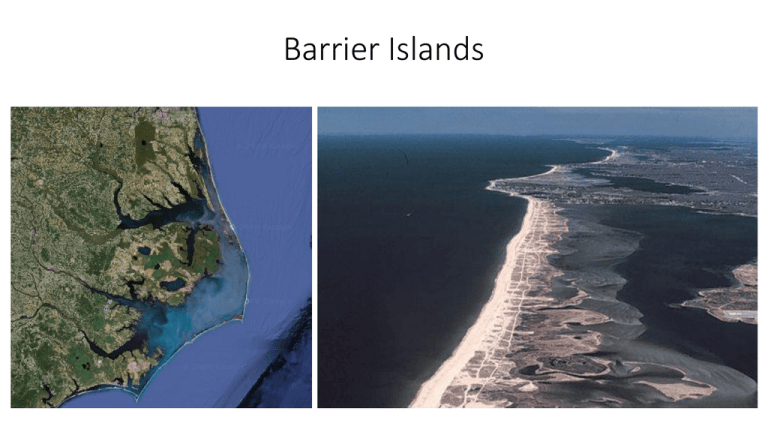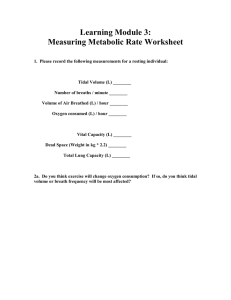Barrier Islands
advertisement

Barrier Islands Complex sedimentary systems with a variety of subenvironments • Beach and shoreface • Lagoon and/or tidal flat • Tidal inlet and tidal deltas Development and morphology of barrier islands depends on coastal gradient (usually form on shallow slopes) and tidal range/wave energy Tidal Range <2 m 2-4 m >4 m Microtidal, wave-dominated barrier islands, Texas Back-Barrier Lagoon Barrier Island Tidal Inlet 30 km Tidal Inlet Mesotidal, tide-dominated barrier islands (Savannah, GA) Back-Barrier Tidal Flat Barrier Island Barrier Island 10 km Meso- to macrotidal barrier islands (Brazil) Barrier Island Back-Barrier Mangrove Swamp 10 km Prograding barrier islands, Gulf of Carpentaria (Australia) 5 km Prograding Barrier Island Arid Back-Barrier Tidal Flat Microtidal barriers are rarely overtopped by high tides, so tidal channels rare; dominance by wave processes (washover lobes and flood tidal deltas) instead Tidal Range <2 m 2-4 m >4 m Washover fans are common constituents of microtidal, storm-influenced barriers Form by storm surge deposition of sand in the back-barrier or lagoon Mesotidal barriers are more frequently overtopped by high tides; have more numerous tidal inlets and dominance by tidal currents Tidal Range <2 m 2-4 m >4 m Tidal deltas and inlet are present in all barrier islands but more numerous (and more important in rock record) as tidal range increases Ebb tidal delta Flood tidal delta Migrating tidal inlet Tidal inlet Tidal inlet Incoming (flood) current fastest on margins Outgoing (ebb) current fastest in channel base Rapid lateral migration due to erosion and longshore sediment drift Deep channels, slow lateral migration Tidal inlet ravinement may erode flood tidal delta and lagoon sediments In retrograding barrier islands, shoreface wave ravinement surface typically removes beach and dune facies A ravinement surface can be a sequence stratigraphic surface (Transgressive Ravinement Surface) if it separates systems tracts Ravinement surfaces can occur within systems tracts (TST below, TST above) and are called “within-trend” wave or tidal ravinement surfaces



